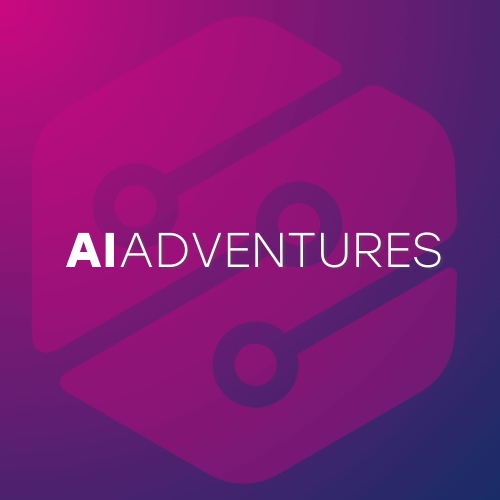Understanding Signals and AI
BEGINNER COURSE
Get ready for an online adventure into the world of Artificial Intelligence (AI)!
This beginner course will take you on an exciting journey through Signal Processing using Machine Learning.
No coding or AI experience? Then this is the course for you!
💰 Price: £75
🎓 Certificate included
🚀 13 – 19 age range
💻 100% online
📆 Flexible, self-paced learning
🎯 Practical challenges and quizzes
⏰ 8+ Hours to complete (4 weeks, 2 hrs per week)
Learning grants available
We are committed to widening access to tech and AI. If course funding is difficult please complete the form below and we will be in touch soon.
Course Overview
Tools You Need

Google Colab

Laptop/Computer

Internet Connection
STAY AHEAD OF THE CURVE
What you will learn

Design AI for good
Explore the basics of AI, how it works and how to use it responsibly.

Grow your personal skills
Develop your critical thinking and problem-solving skills.

Learn to code with Google Colab
Use python libraries for Machine Learning like SciPy, Numpy, PyWT, and sklearn.

Explore data analysis
Gain the essential tools of data science and apply mathematical concepts such as probability and statistics to solve practical problems.

Unlock the power of Machine Learning
Learn signal analysis, work with databases and various Machine Learning algorithms.

Project building
Put the theory into practice by building your own ML project.
Meet Your Instructor
Piero Paialunga
Machine Learning Engineer, Gen Nine Inc.
Artificial Intelligence and Climate Change Writer
Machine Learning + Python | Aerospace Engineering | Climate Change
A PhD student in Aerospace Engineering at the University of Cincinnati with a Master’s Degree in Physics and Data Scientist, Piero Paialunga is an expert in his field who now works as a Machine Learning Engineer at Gen Nine Inc.
Skilled in Machine Learning and Data Science, Piero takes complex systems and unpacks them easily. Among his numerous accolades, Piero is one of six students to have been selected as a UC Space Research Institute Fellow.
Course Outline
EXPLORE EACH MODULE

Your Title Goes Here
Your content goes here. Edit or remove this text inline or in the module Content settings. You can also style every aspect of this content in the module Design settings and even apply custom CSS to this text in the module Advanced settings.
INTRODUCTION TO AI
What is AI and what can you create with it? We will explore the concepts of AI, Intelligence, Automation and Machine learning, and learn about data-handling for AI and machine learning tasks. You will also see how algorithms work and some examples of AI using real-world applications.
INTRODUCTION TO AI ETHICS
How do we build AI safely?
In this video, you will be provided with an understanding of ethical considerations and implications surrounding the development and use of artificial intelligence. Through case studies, you will see examples of ethical issues that have been addressed in real-world scenarios. Additionally, you will be introduced to best practices for responsible and ethical AI development. By the end of the video, you will have a solid foundation in the key concepts and issues related to AI ethics.
SIGNAL, STATISTICS AND PROBABILITY
What is a signal anyway? After this part of the course, you will learn a basic definition of a Time Series. Using that as a starting point, you will learn the definitions of Mean, Median and Standard Deviation.
TOOLS FOR WORKING WITH SIGNALS
When dealing with data, there are essential tools and concepts you will need to know and use. You will learn the basic ideas of a Fourier Transform, denoising techniques, and enveloping.
TRAINING AND TEST SETS, REGRESSION, INTERPOLATION
The idea of forecasting using machine learning will be covered in this section of the course. An easy introduction to linear regression will be provided to get things started. We will also talk about polynomial regression after describing the limitations of linear regression. As this will be our first predictive analysis, you will learn how to apply a train-(validation)-test split to a dataset and how to evaluate your performance.
OUTLIERS, GAUSSIAN PROCESS REGRESSION
A Data Scientist must at least be aware of what Outlier Detection is. In this part of the course, we will explore the general idea of Outlier Detection and we will implement a Machine Learning tool to explain how it works and how it can be applied in a real dataset.
PROJECT BUILDING
Get ready to take the skills you’ve learned and put them to the test in an exciting real-world project! You’ll be diving into the world of Signal Processing and using cutting-edge techniques to analyse and transform signals in ways you never thought possible!
Why should you learn Signal Processing?
TELL A STORY WITH DATA
Signal processing combines mathematics, physics, and computer science, which makes it a fascinating field that offers endless possibilities for innovation and creativity!
Now, Imagine being a part of a field that’s valued at $230 billion and growing. Data science and machine learning are revolutionizing industries from healthcare, climate analysis, and audio production to transportation, and the demand for experts in this field are skyrocketing.
Don’t miss out on the opportunity to be at the forefront of shaping the future and join the AI revolution today!
“It was an incredible experience that used problem solving, and more useful skills that aren’t necessarily provided for in standard school curriculum.”
“I loved the fact that we can learn such things by having fun! I would recommend this to everyone!”
“As a teenager passionate about technology, I enjoyed expanding my knowledge of AI and how it can be used to enhance the quality of life.”
Frequently asked questions
Your Title Goes Here
Your content goes here. Edit or remove this text inline or in the module Content settings. You can also style every aspect of this content in the module Design settings and even apply custom CSS to this text in the module Advanced settings.
HOW DO YOUR PAYMENTS AND REFUNDS WORK?
Our payment and refund process is designed to be straightforward and customer-friendly through a secure payment gateway. All payments made are the country specific equivalent of the Great Britain Pound (GBP). For the most accurate and up-to-date details on our refund policy, refer to our “Terms & Conditions of Business.”
WHY IS THIS COURSE VALUABLE?
This course is ideal for teens who are curious and inspired about the world of data science, Artificial intelligence and machine learning, and this will provide a foundation to build upon a set of skills to implement machine learning techniques and models. The data science platform was valued at 31.05 billion dollars in 2020, and it is expected to reach 230.80 billion dollars by 2026. It is a dynamic and expanding field that can tap into many industries with various applications.
HOW LONG WILL IT TAKE TO COMPLETE?
On average, this course takes approximately 2 weeks to complete if you do 1-2 hours of work per day. You can choose when to learn, complete activities, and set your own learning goals during your own time within the week.
WILL THERE BE ANY PROJECTS OR ASSESSMENTS?
The course will put the theory into practice, and provides various activities to do, including building a signal processing project using all the techniques covered in the course.
WHO SHOULD I CONTACT IF I HAVE MORE QUESTIONS
For more information, please contact Alanna at [email protected]
Still have more questions? Visit our AI Adventures FAQs

